Scene 1
II - Genealogia
Genealogy
Bixiga River Park
Text by Marília Pirajú, red by Marília Pirajú and Rodrigo Andreolli

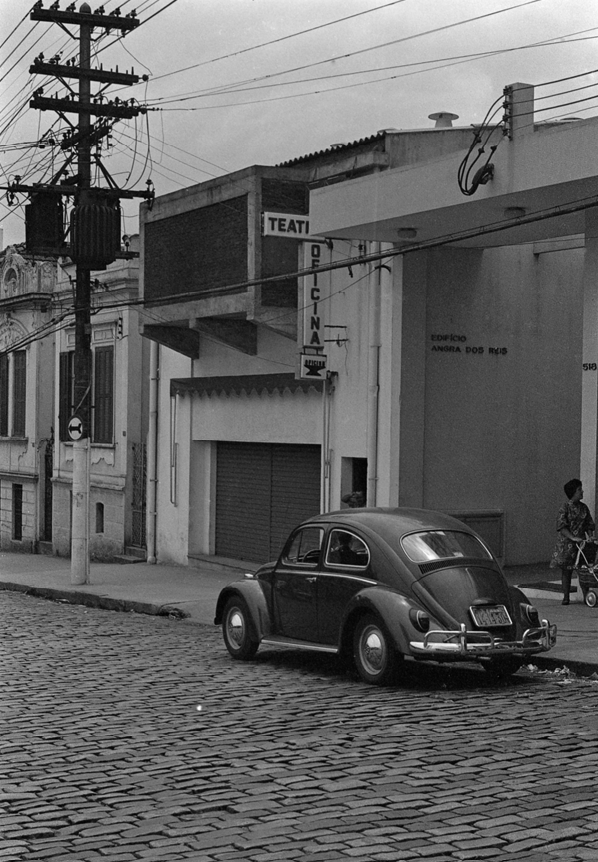

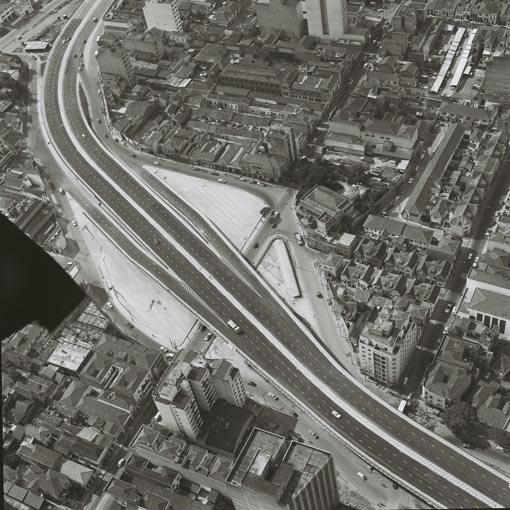
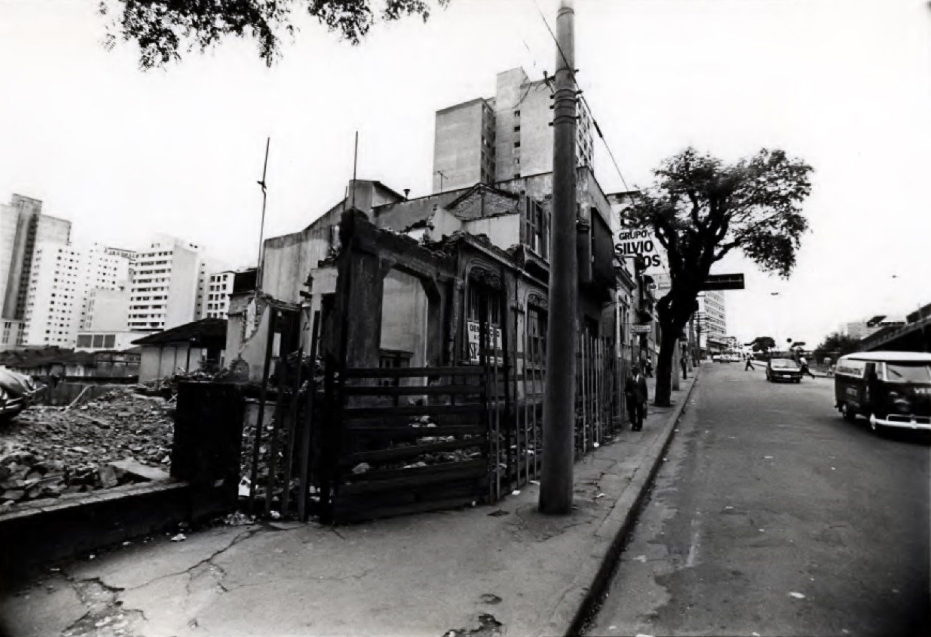
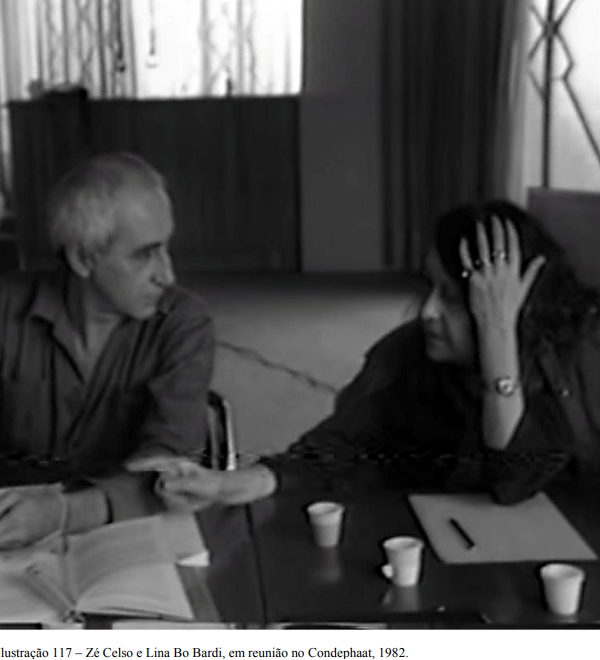
1980
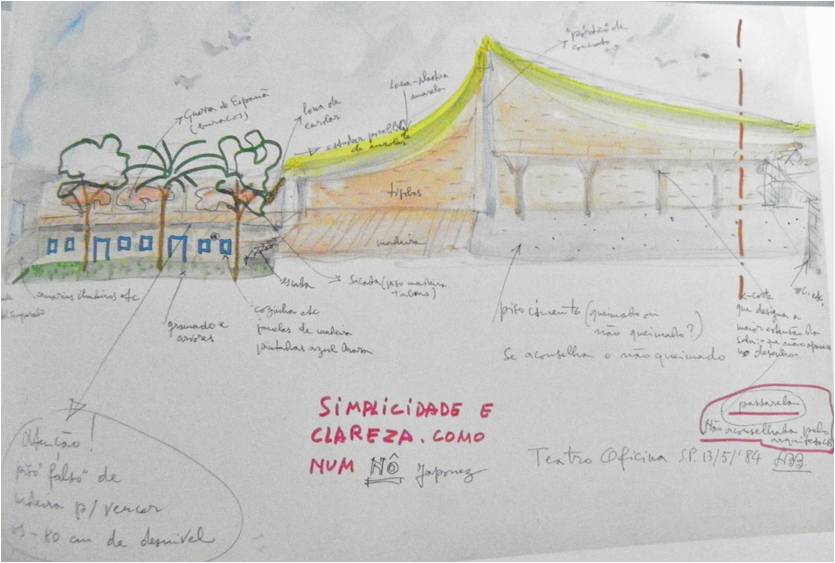
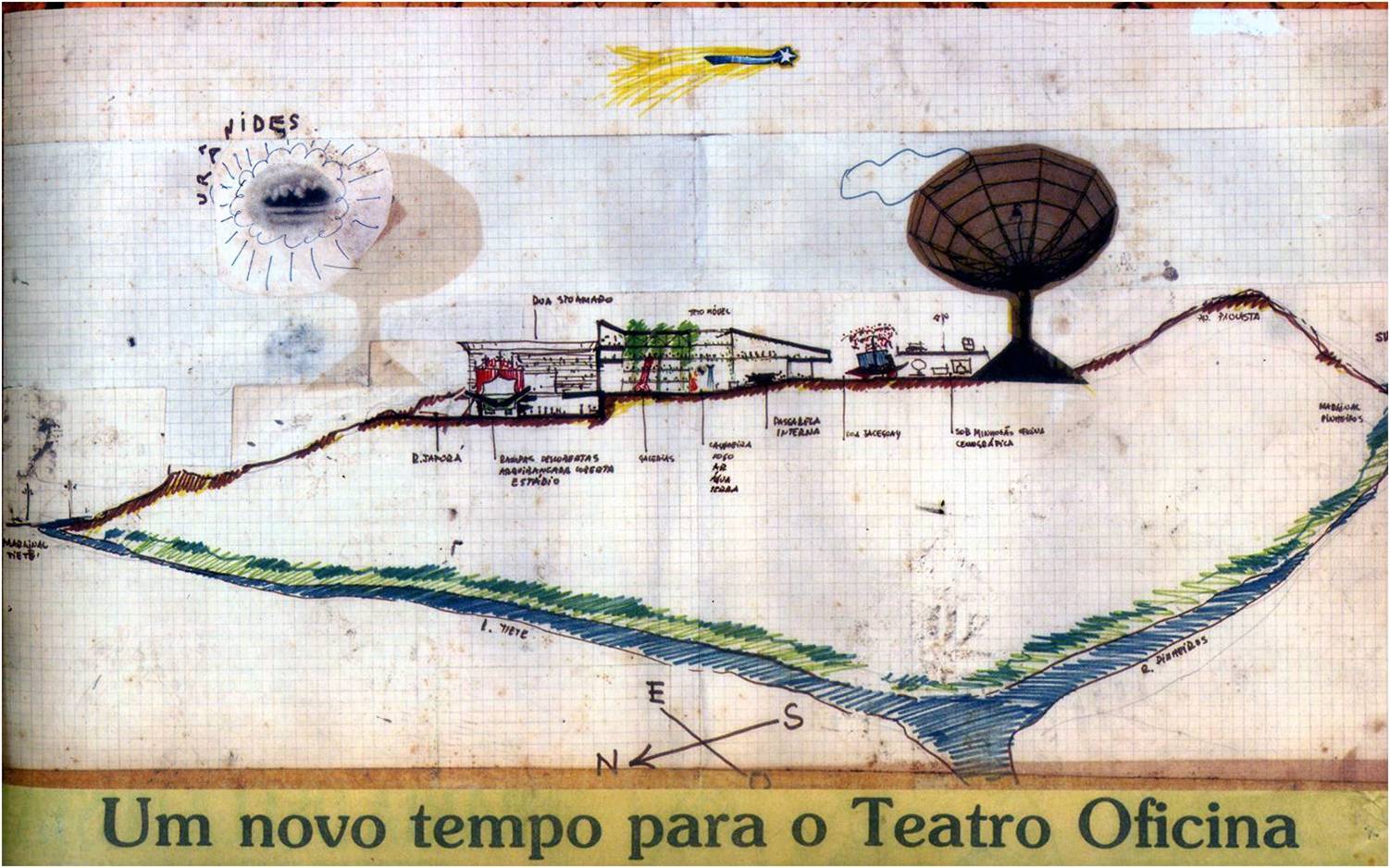
Brazil, São Paulo, Bixiga neighborhood. The Silvio Santos video-finance group covets and wants to buy an entire block in the heart of the historic Bixiga district to build a shopping center. In the middle of the block is the Teatro Oficina, currently the oldest active theater in Brazil. The architect Lina Bo Bardi, Zé Celso, one of the founders and director of the Teatro Oficina company, Edson Elito, Surubim Feliciano da Paixão, Edgar Ferreira, Zuria, Sandy Celeste and other artists from the company at the time accept the battle and the destiny of avenging a struggle that has lasted 44 years.
November 6, 1980
The Silvio Santos group gives the company one month to buy or definitively lose its headquarters.
November 30th
Oficina mobilizes public opinion at a festival, Domingo no Parque, which was attended by artists such as Caetano Veloso, Emilinha Borba, Gilberto Gil and many others; Oficina mobilizes public opinion at a festival called Domingo no Parque (Sunday in the Park) attended by artists such as Caetano Veloso, Emilinha Borba, Gilberto Gil and many others. Facing that exposure, Silvio Santos publicly announces his withdrawal from the intent of buying the plot. November 30 is the date considered to mark the beginning of this fight against real estate speculation.
1982
The Teat(r)o is listed by CONDEPHAAT, with Azis Ab'Saber as president and Flávio Império as advisor, who creates the report defending the movement to expand the company's line of work.
1983
The theater is expropriated by the state and its building, which until now had been rented by the group, becomes part of the public domain and becomes a space entirely dedicated to cultural action under the direction of Oficina
1987
Lina Bo Bardi and architect Edson Elito carried out a study for the occupation of the site. A subtle project, with an open-air theater and an embryo of the Bixiga River Park, which they called the Green Lung of the Neighborhood.
1991

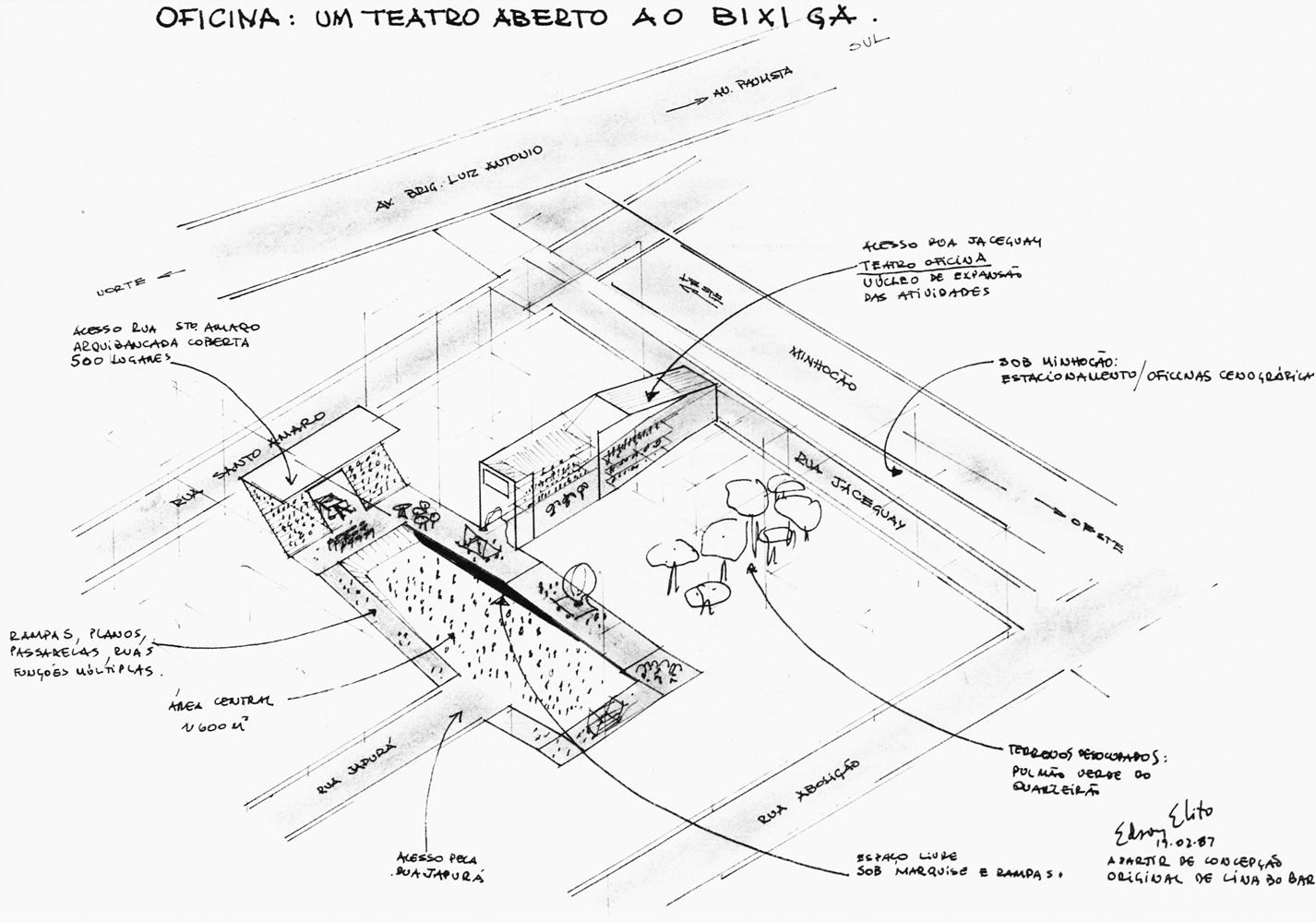
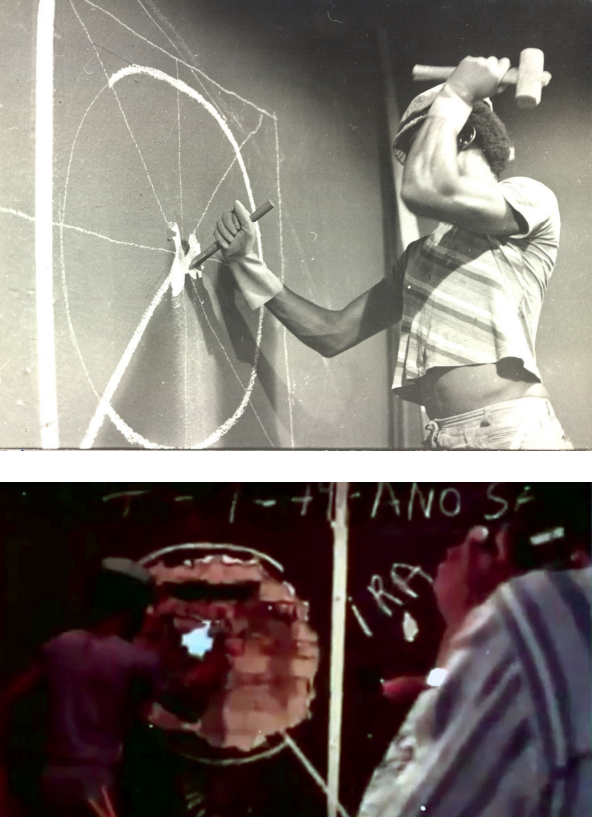
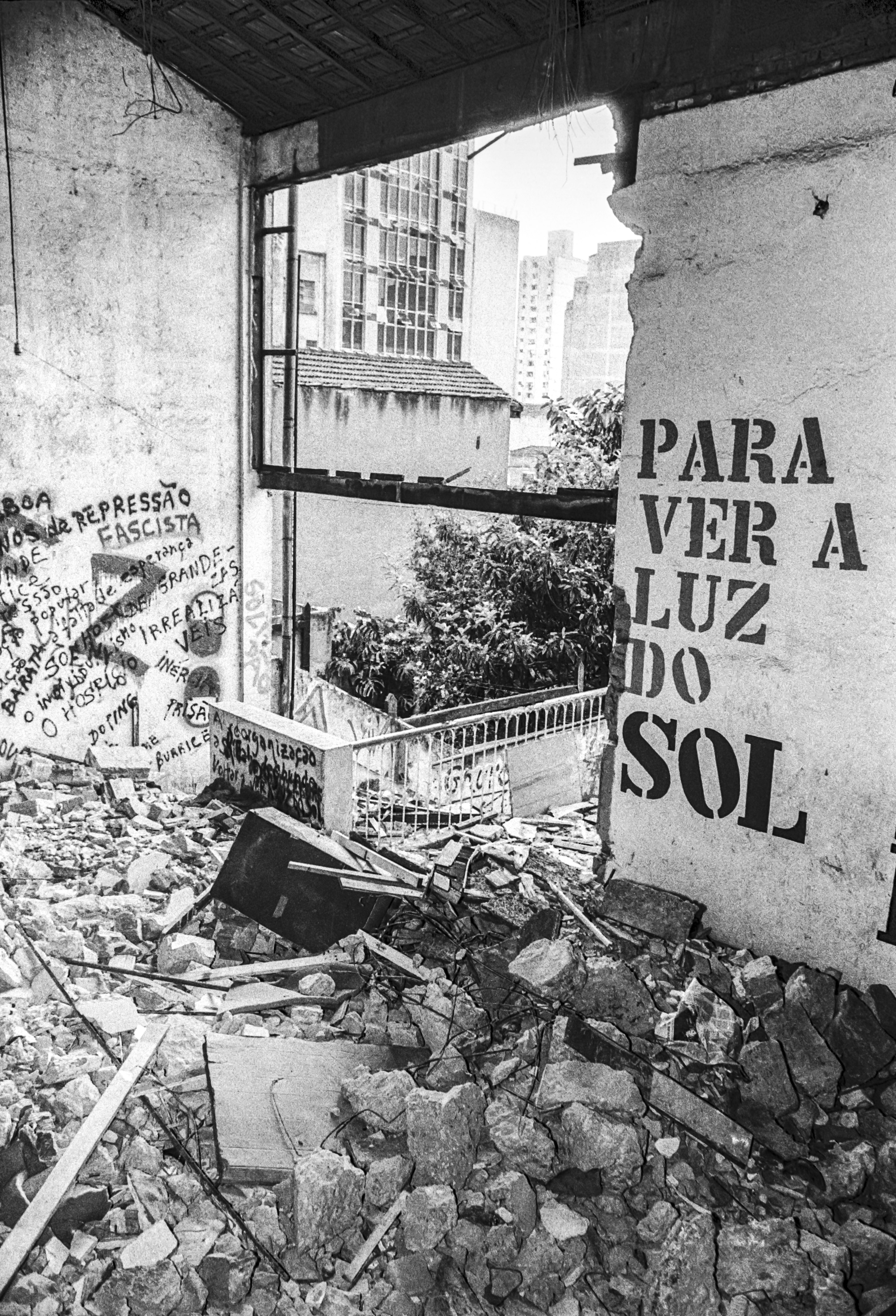
The architect Paulo Mendes da Rocha made a new study, going beyond the limits of the land and reaching with his project the shallows of the Minhocão in front of the theater, being the first to point out an approximation of the project with Bixiga. Paulo Mendes proposed crossing the viaduct, planting two towers on a remnant of land on the other side of Jaceguay to house the memory center of the Brazilian Theatre.
2000
The city council approves the construction of the Shopping Center Bela Vista Festival Center by the Silvio Santos Group, a project by Júlio Neves. The construction company refuses to follow the municipality's construction parameters and, as a precautionary measure, the work is embargoed.
2004
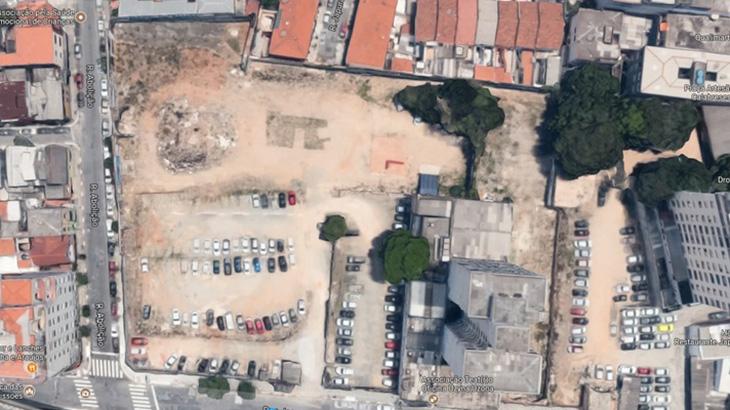
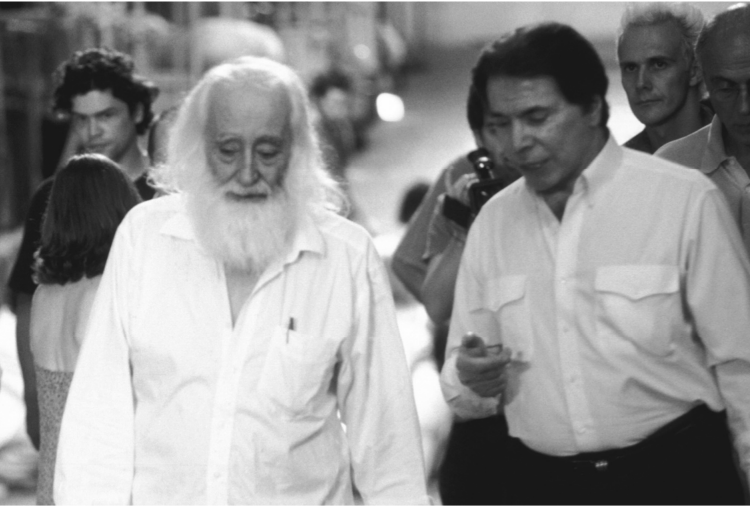
During a visit by Silvio Santos to the Teat(r)o during the staging of Os Sertões, the proposal to exchange land owned by the group with federal land arose for the first time.
As a result of the visit and the possibility of an exchange, and prompted by Silvio Santos himself, the company began to work on a more in-depth program for occupying the land, which at the time was called Anhangabaú da Feliz Cidade. The architect João Batista Martinez Corrêa, Zé Celso's brother, designed a proposal to build the Stadium Theater, the Anthropophagic University and the continuation of the Forestry Workshop on the surrounding land.
still in 2004
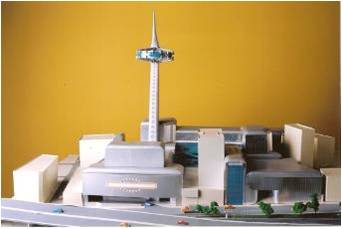
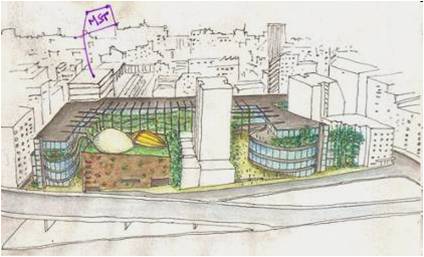
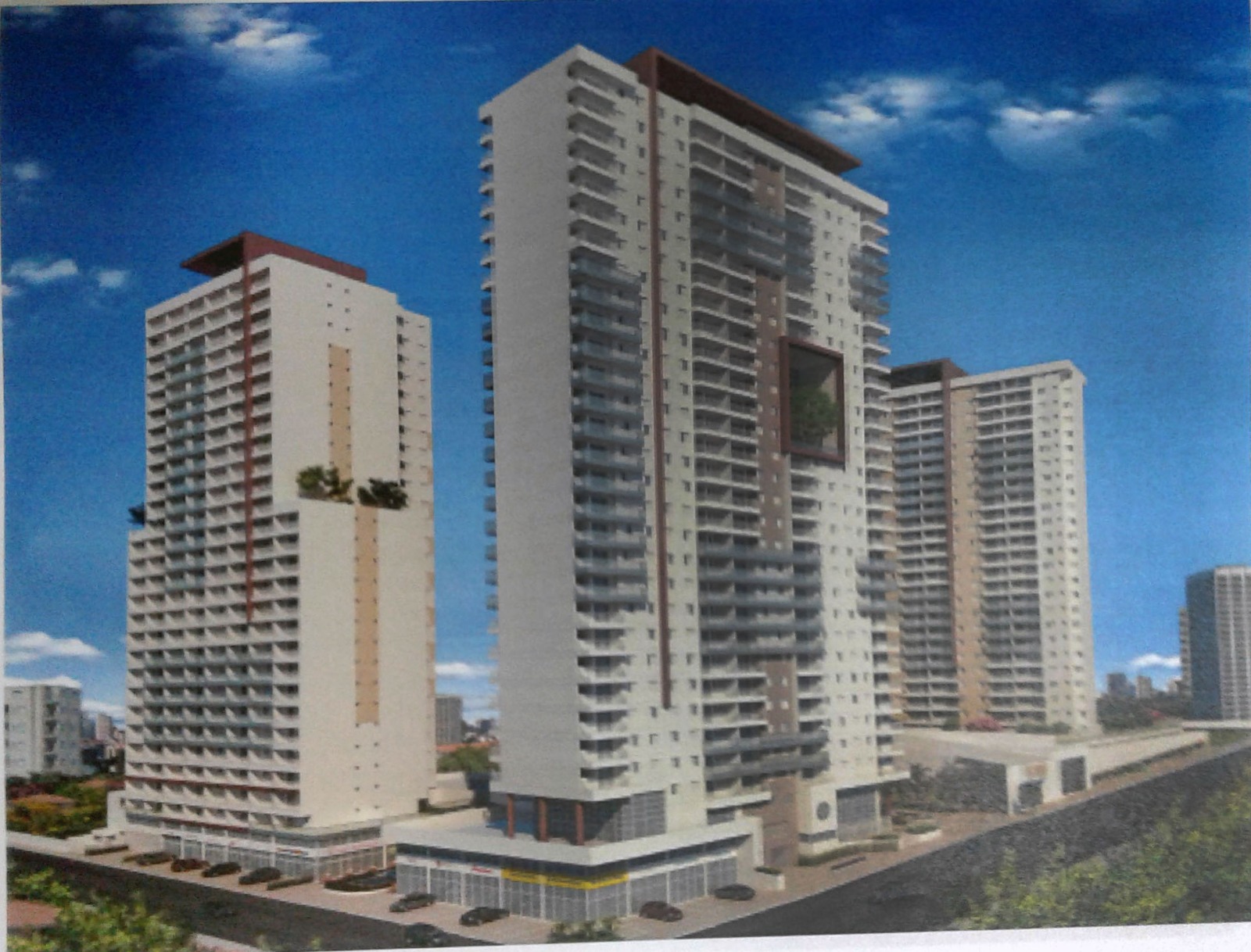
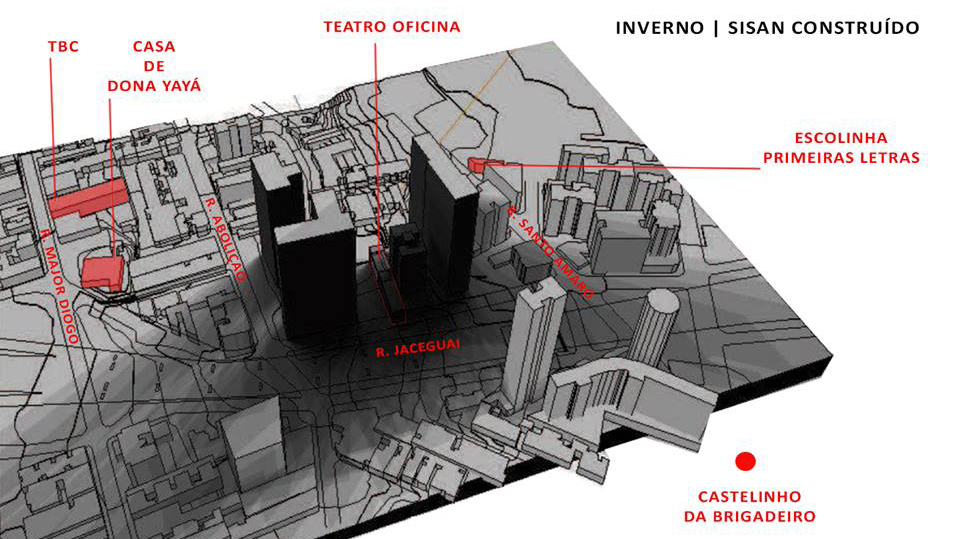
The SS Group invites the Brasil Arquitetura office, coordinated by architects who worked closely with Lina Bardi, to draw up a hybrid project that would meet the group's market needs, with the construction of the Shopping Center and in return would include the Stadium Theater project.
But the project resulted in a monumental mega-development of almost 60,000 m², alienated from its surroundings and confining the Teatro Oficina, so CONPRESP asked for a change in the design and the group abandoned the project.
2008
The towers: the Silvio Santos group changes the nature of the project and plans to build a high-end residential condominium, with three buildings almost 100m high - a monumental project that goes against the grain of the listed Bixiga district. The SISAN group, the real estate arm of the Silvio Santos group, is trying to get the buildings approved by the three bodies responsible for heritage preservation - CONPRESP, CONDEPHAAT and IPHAN.
2010
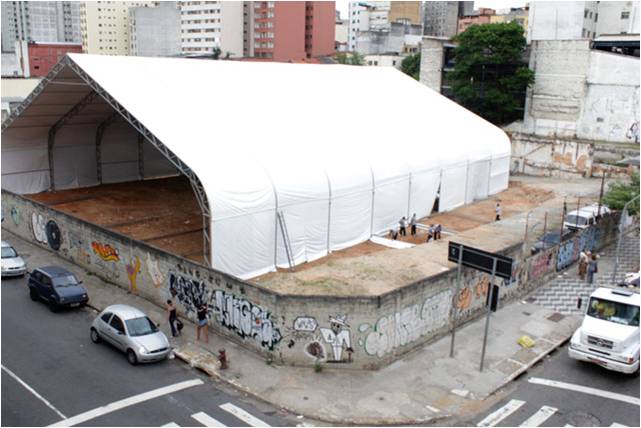
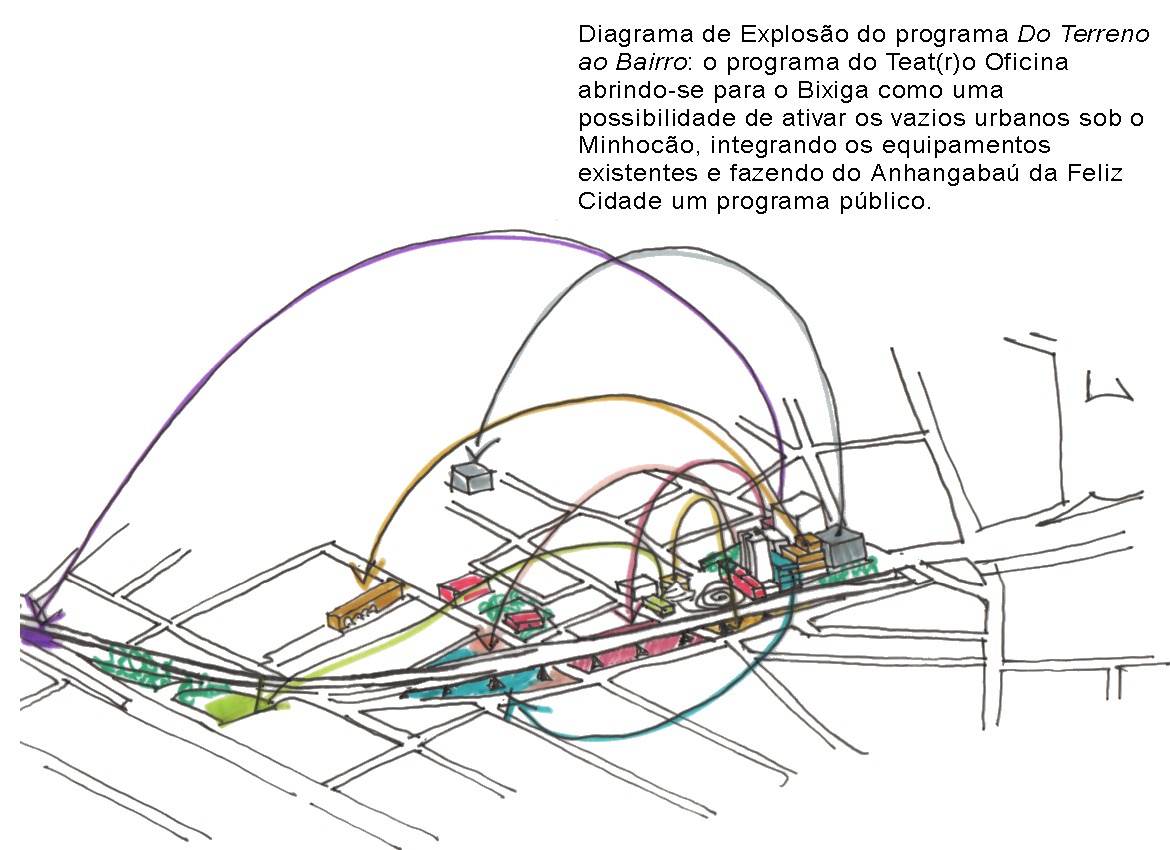
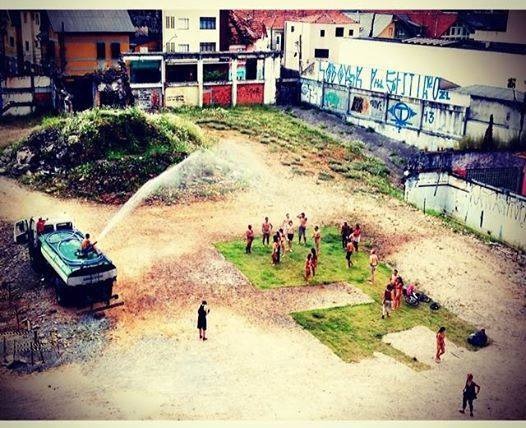
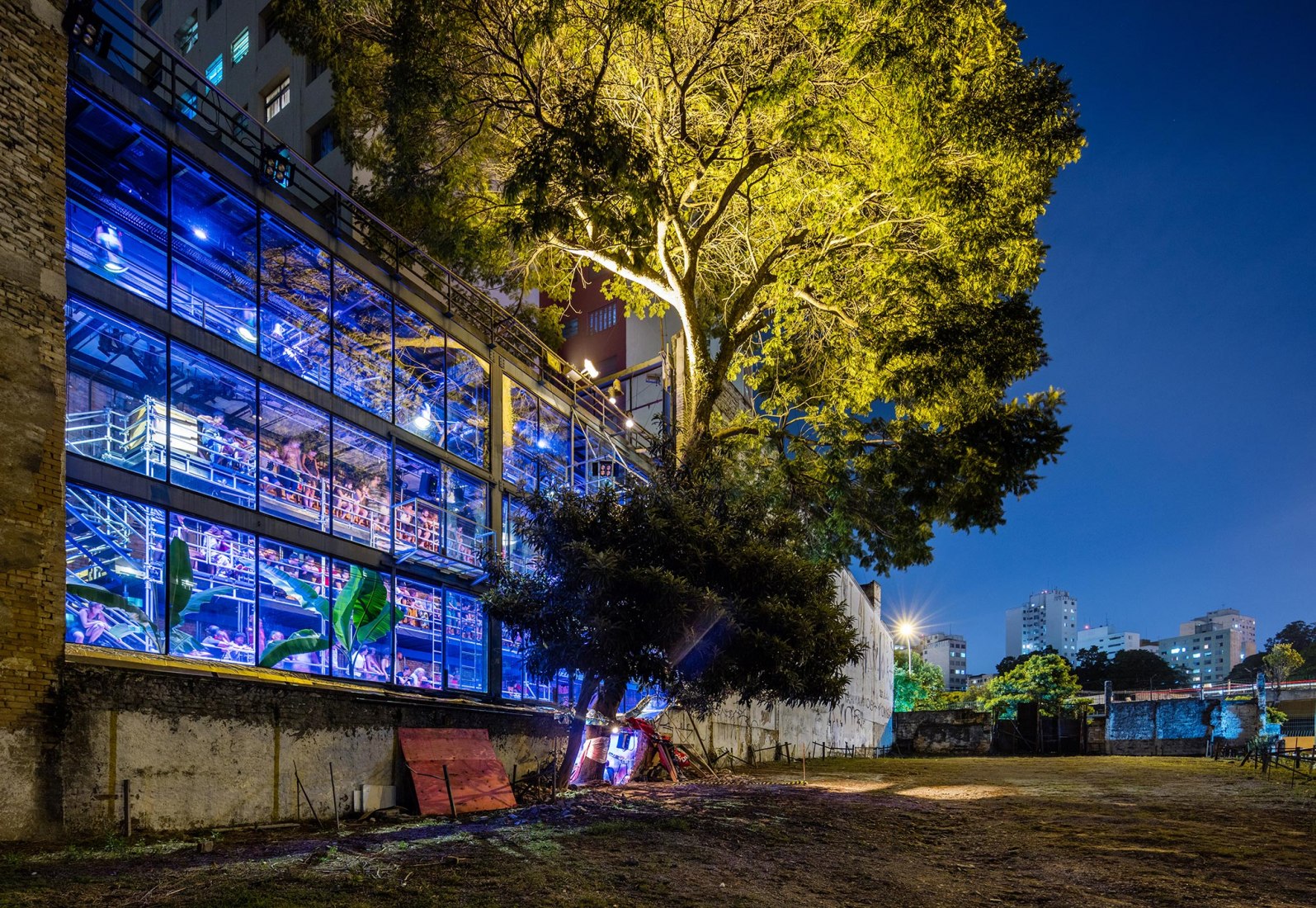
José Celso calls Silvio Santos and asks to borrow the surrounding land so that Teatro Oficina can set up a 2,000-seat tent, the Stadium Theatre, and stage the company's repertoire, which had toured Brazil that year. Silvio Santos accepted. A loan agreement was signed between the Silvio Santos Group and the Associação Teat(r)o Oficina Uzyna Uzona.
It was the first time that they had set foot on the land and this gesture revealed the power of maintaining the integrity of that void.
Also in 2010, the theater and the Teat(r)o Oficina Uzyna Uzona Association were listed by IPHAN as material and immaterial heritage of Brazilian culture.
2013
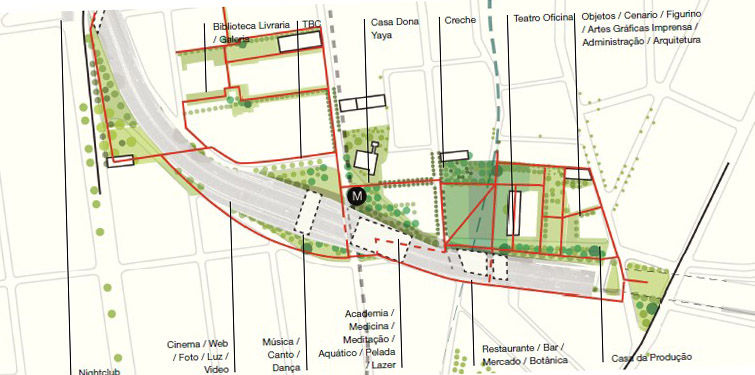
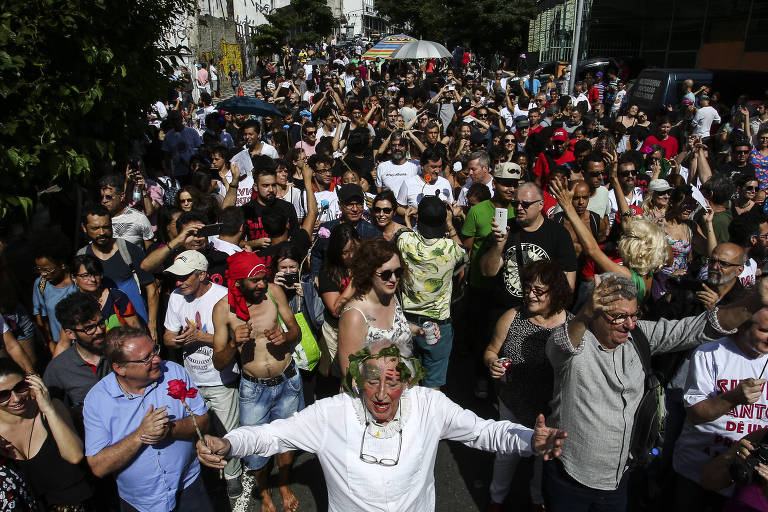
In 2013, Tea(tr)o Oficina was invited by the X International Architecture Biennale to take part in a residency, along with architects from other countries, to develop a project for the land around the theater.
The project created is the multiple incorporation of the proposal scribbled by Lina Bo Bardi, Edson Elito and Paulo Mendes da Rocha for the land in question, and above all to maintain the discovery of the integrity of the void and not to clutter the land with very dense constructions, buildings and concrete.
The choice was to relocate the existing program of occupation of the land to other voids and urban leftovers in the neighborhood, left by the construction of the minhocão, and to keep the land with only the layer of plant occupation, the Oficina de Florestas.
2016
The Silvio Santos group begins a fast-track process to get the tower project approved by heritage preservation bodies.
2017
A change in the political landscape changes the profile of the councils of the preservation bodies and the tower projects, through an appeal, are approved by CONDEPHAAT
still in November 2017, a bill was created, PL 805/2017, authored by councillor Gilberto Natalini and co-authored by many other councillors of the São Paulo City Council, for the creation of the Bixiga Municipal Park.
2019

A new team approaches the collective that had been working on the Bixiga Park project, but a fundamental paradigm shift takes place: for the first time, the Bixiga river is placed as the protagonist of the project, its decommissioning and the prospect of it flowing under the open sky, is the new super-objective of the project, which brings together all the vegetation that is born along with the renaturalization of the river: riparian forest, native, exotic, orchards and beyond, as well as an open-air stage following the rugged topography of the terrain. Level walkways, a runway stage, a floating stage that can be flooded during the ebb and flow of the Bixiga River. Audience area and stage area merged into a tropical open-air theater. Simultaneous occupations. Temporary and multiple configuration possibilities. For each play, each action, a theater. A block open to all cardinal directions, to all seasons, in alliance with the water cycle. Rammed earth, trampled grass. Cinema, samba school rehearsals, collective lunches, theater festivals in the spring, open-air fairs, peladas, circus arenas. Creative laboratories in the restored urban forest, the orchard, the plant nursery, the vegetable garden. The science of cultivating the land, no landscaping, no decorative flower beds. Forest workshop, nature in practice.
2020
the acting mayor Eduardo Tuma vetoes the bill creating the park on March 13, 2020, which had the extraordinary and numerous support of 27 councillors co-authored by 10 different parties, and the formation of a chorus of supporters from all areas of activity, from all regions, political colors, representative institutions in the Bixiga neighborhood and in Brazil.
2021
August 16, 2021
launch of Bill 425, now authored by Eduardo Suplicy, a city councillor and enthusiast of the struggle
2022
in february the lawsuit filed by Associação Teatro Oficina Uzyna Uzona against the construction of the Silvio Santos Group's towers goes to the 2nd instance of the Supreme Court
in the same year, the São Paulo city council creates, via the executive branch, PL 877 / 2021, which creates the Bixiga River Park
2024
In April the Silvio Santos group announced that it will accept the negotiation to sell the land to São Paulo City Hall and reaches an agreement for 65 million.
June - hearings begin to approve the bill created by the city council
July 02, 2024 - executive bill approved
September 6, 2024 - City Hall signs off on the sale of the land and the 44-year struggle reaches its apotheosis: the land is now public, with a cultural and environmental destination.
2025
IAB and the Municipal Department of Greenery and the Environment are about to launch a public competition to choose the project that will go on this land!
and it will be together with those who fought this fight from the inside, Taetro Oficina and the Bixiga neighborhood and everything that is alive and also the ancestors who make up this team of struggle and choral insurrection!
A COSMIC DESIRE PROTECTS US!
ACTION!